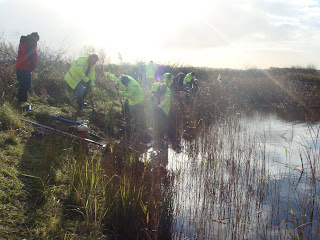In a strange cycle of losses and gains, landfill waste can lead to increased investment in biodiversity. Here Froglife’s CEO, Kathy Wormald, discusses some of the new habitats created thanks to the Landfill Communities Fund, and ponders the future of the fund...
"Despite recycling initiatives, the amount of waste going to landfill every year is huge. Taxes are increasingly used as a disincentive on producing more waste, and landfill companies are also encouraged to support valuable conservation and community projects through tax credits. Perhaps this is a more pragmatic way of dealing with the problems associated with landfill until we can decrease the amount we waste; rebalancing issues through local reinvestment. Areas of land may be lost to landfill, but other areas nearby benefit.
Over the past three years Froglife has generated in the region of £638,000 in grants through the Landfill Community Fund. We have created 72 new ponds, restored and improved 108 ponds, and we have trained 1,497 people in new skills. We have carried out 344 great crested newt surveys on 43 London sites. These figures will be further boosted with work that we currently have in the pipeline, for instance we will be working on 14 sites in North Lanarkshire up to the beginning of 2014 and we are about to start a project in Greenwich. Funding from landfill has enabled us to make genuine, on the ground improvements for wildlife and people in these areas.
 |
| Volunteers at work restoring a pond |
I can only speak on behalf of Froglife, but we certainly hope that during these austere times with the cuts in Government spending that Landfill Tax Credit is not a victim. The conservation and environment sector are already the poorest funded sectors, and we are currently witnessing dramatic cuts for biodiversity, with many local councils making their Biodiversity Officers and others working in nature related activities redundant.
These current cuts will undoubtedly have severe impacts on the nature conservation agenda, making creating and maintaining wildlife habitats even more of a challenge. We certainly cannot afford any further cuts."
- You can find out more about Froglife’s habitat projects here
- You can find out more about the Landfill Communities Fund here
Tweet
Photo: Francesca Barker
